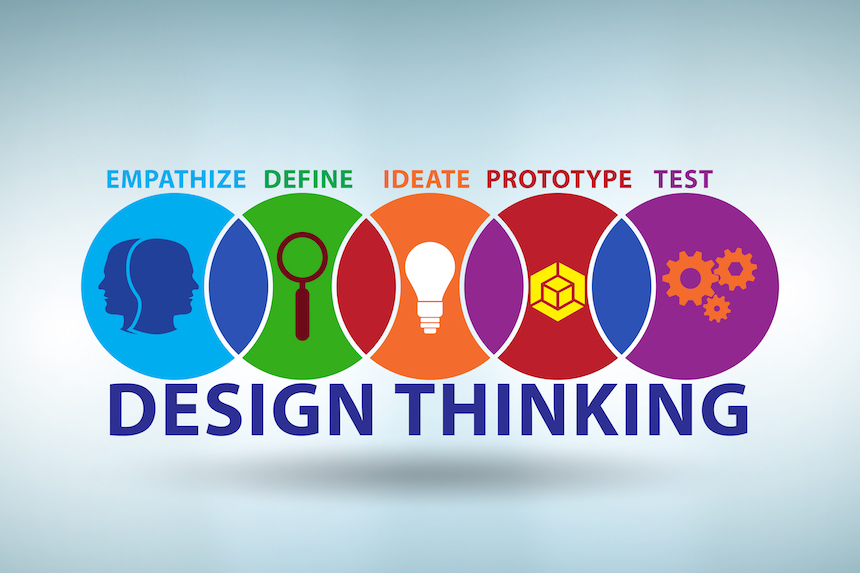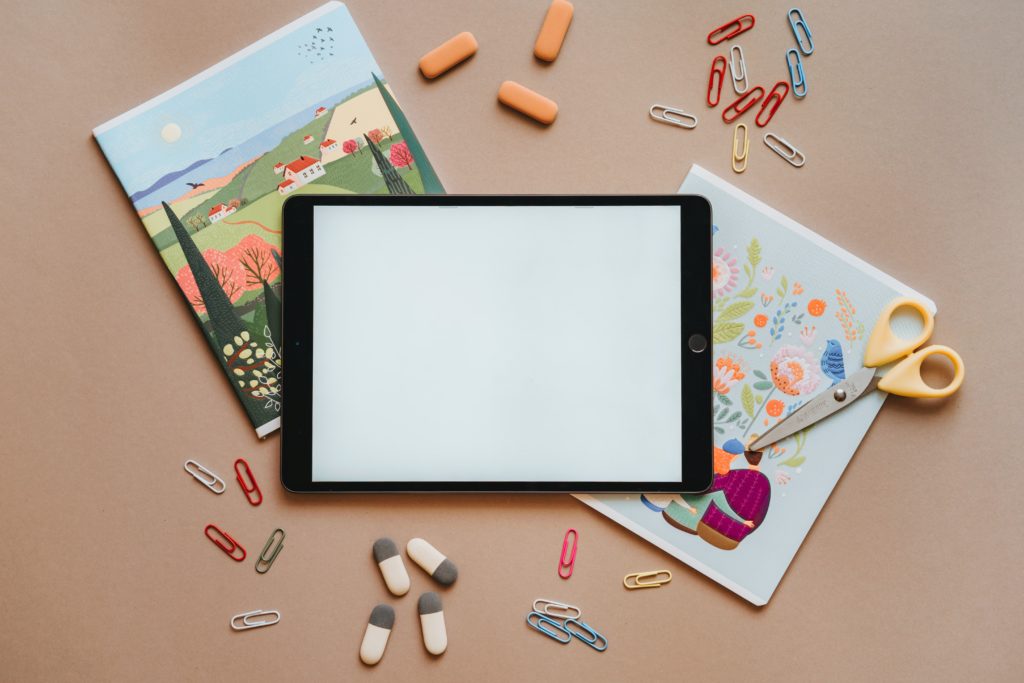An exploration of resources and advice for applying design thinking for schools
Design thinking is a unique learning and problem solving mindset that we highly recommend to innovation-minded organizations and businesses. The approach can be applied to nearly every industry and discipline, making it a useful tool when brainstorming solutions to challenges and testing them in action. One such place is the education sector, where colleges, high schools, and K-12 schools have begun adapting the mindset to improve the educational experiences of their students. In this blog, we’ll share some resources and tips to use design thinking for schools to enhance both the in-class and out-of-class experiences for teachers, students, and parents.
(We are currently doing research about design thinking in education. If you are an educator teaching or using design thinking…please share your experience on our short open-ended survey.)
A Framework for Educators and Administrators

The five main stages of the design thinking process can create better experiences for our stakeholders. Here are some examples and thoughts outlined below for each stage.
1. Empathy
Tapping into empathy is critical in the design thinking process. Empathy allows you to understand the needs of others and look beyond your own worldview to someone else’s. How do our students, parents, teachers, and others receive experiences in our classrooms and schools? Thinking from another perspective and considering different point of views allows you to understand challenge points in the education system and experiences of everyone involved.
2. Define
In this stage of design thinking, the goal is to establish a clear definition of the challenge at hand. This requires receiving input from those who are directly affected by the challenge – such as the kids affected by a new discipline policy or the families impacted by a remote learning option. Throughout this stage, you want to actively listen to the parents, students, and teachers involved to understand their point of view as well as include them in the process of designing a solution (or at least giving feedback on it).
3. Ideate
User input is essential for guiding the development of solutions to your challenges. During the ideation or brainstorming process, you’ll work in teams to rapidly generate as many solutions as possible. You are not necessarily looking for the best solution, but simply trying to generate as many ideas as possible. In this phase, the sky is the limit and money is no object! Frequently, ideas generated in this way lead to outside-of-the-box thinking that can yield innovative solutions.
4 & 5. Prototype and Test
The next steps are to test out those ideas in practice through prototyping. Prototypes may go through multiple iterations before a final product is produced – and that’s okay. The general idea to be flexible, agile, and willing to work through the problem until the best result is obtained. Input from teachers, students, and parents can reveal potential problems with your prototyped solution, suggesting that adjustments need to be made. Testing out a solution in action and getting feedback from the people affected by that solution will lead to a better outcome for all.
Design Thinking Resources for Educators
Use the resources below to learn more about the design thinking process and its unique adaptation in the K-12 and higher education spaces.
- DTK12chat – The twitter hashtag #DTK12Chat is a fantastic resource of information and advice in this topic area. Share your own experiences nd reply to others who are sharing using the hashtag as well.
- Teacher’s Guild – The Teacher’s Guild is an organization focused on helping teachers solve the biggest challenges impacting education and K-12 schools. Both online and local resources are available to help educators in the design thinking space.
- Toolkits and Guides – In our previous blog post, we also covered a series of resources for educators, including IDEO’s Toolkit and various video tutorials.
- K12 Lab – This resource provided by the Stanford d.school is designed specifically for elementary and secondary education sectors. Workshops, events, courses, and other learning experiences are available for K-12 educators around the world.
Find more helpful guides in our design thinking resources for educators blog post.
Want to learn more about design thinking in action? Consider scheduling a personalized workshop with InnovationTraining.org. We can create a custom online or in-person program that addresses your unique educational challenges. Contact us today to get started and make design thinking for schools a reality!
